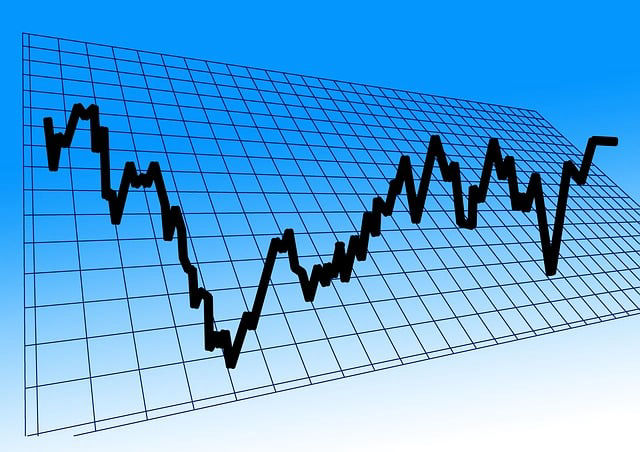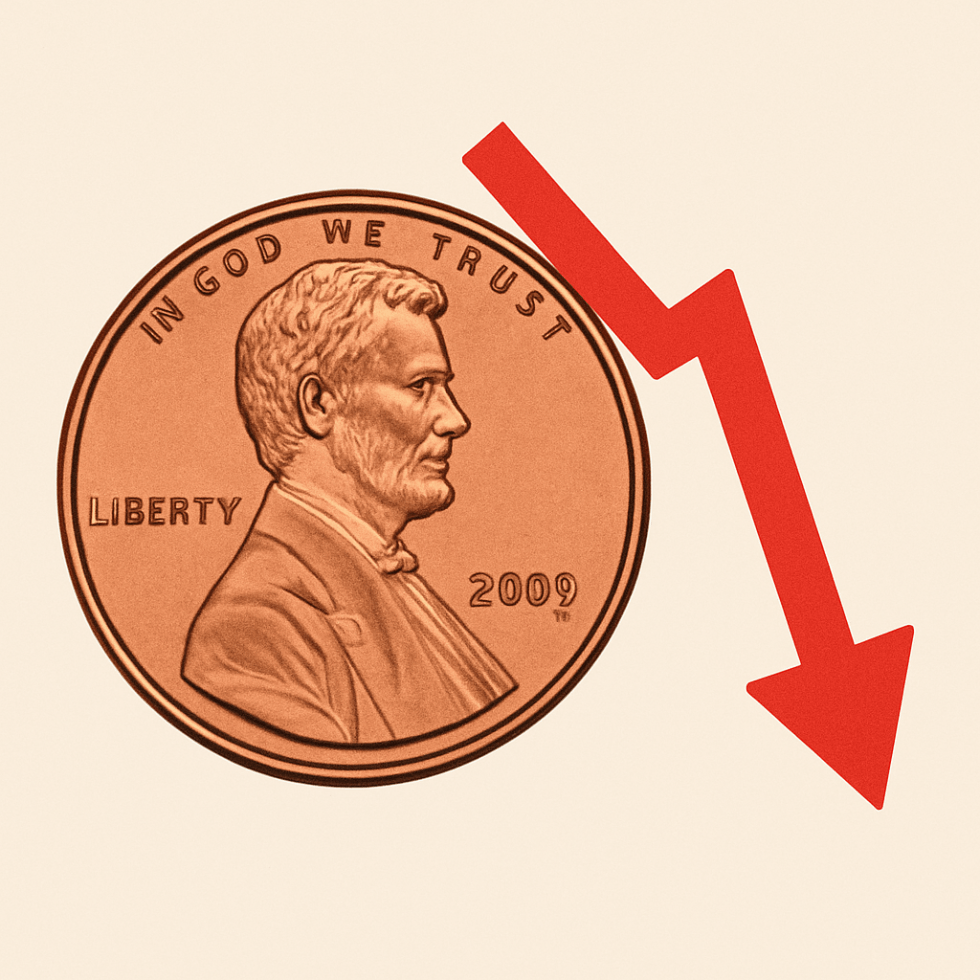A Couple Examples of Past Stocks That Tanked
Manulife
In 2009 Manulife financial cut its dividend down by 50%.This is a solid company many could have had sizeable positions invested and they could have accumulated them by dollar cost averaging monthly over years.
Lets say a person put $500 a month into Manulife and accumulated $25,000 in principal value and with growth its value was worth $30,000. It could be worth more. (This is the advantage of dollar cost averaging even when a stock is generally up trending over time.)
Then unexpectedly Manulife cuts the dividend in half and the value of their stock drops virtually in half over the next few trading days.
All of a sudden that investment is now worth $15,000. Now say the investor has only 4 stocks. This is why diversifying into more stocks with less money that offer similar growth is a way to protect wealth and limit potential risk from a poor fundamental happening in one company.
Sometimes it is much harder to see the problem within one company, rather when the entire market goes down. When the entire market is affected it is usually something on a global or national scale that is temporary and doesn't pose a huge threat overall. It is more just patience and offers the opportunity to invest in the lows.
In the case of Manulife it did recover over the years and dollar cost averaging over that time would have proven well. It wouldn't come with some uneasy feelings and doubt and questioning if it was a good idea. This does show overall how the DCA method really does work and works well when a stock is at a low point in its course of life.
If Manulife didn't recover from a high and truly dropped, applying $500 a month to Manulife would take a long time to regain $15,000 worth of loss. If you have many years to wait, then this is an excellent long term opportunity. There are many stocks where their evaluations are way over priced and they do not pay a dividend and when the ride may be over, this can be massively devastating to an investor.
BCE.TO (Bell Mobility)
The problem with a company like Bell Mobility is people fell in love with the dividend and despite the writing on the wall and increasing debt and poor fundamentals and management of the company, people wanted to "Believe" in the company and hold their massive investments they accumulated over years and years.
In 2005 they cut their dividend and the stock dropped massively.
Now in this case there is a chance they will recover over time as this is a typical scenario where the company had no where to grow and the management only can take from the company and slowly destroy the balance sheet setting up the disaster to reset and rebuild for growth.
But again, it is sketchy and people are holding onto big losses. Dollar cost averaging into big losses, takes a long time with little amounts or investing a lot and risking the that money. It is unknown if something fundamental is around the corner and could wipe out the company or they just sell out to another entity. It is always important to watch and pay attention to fundamentals and wait on the news.
Dollar Cost Averaging Can Be Managed In Various Ways
Dollar Cost Averaging Into A Pick Of Stocks With Set Amounts Monthly
A traditional investing style involves a set amount of money monthly into a few stocks. Let's say $100 or $200 a month and then build it up to be a few thousand. A financial advisor would suggest what stocks are buys and manage that portfolio for the investor and watch the fundamentals and manage the portfolio accordingly.
If you do not have an advisor and choose to do this your self, then it is important to make a plan and chose companies you understand and watch the market.
It is advisable to be careful to diversify and not accumulate too big of a position into any given stock incase something catastrophic happens. If it does, it is easier to position capital against it, if the company is undergoing a temporary trial for the rebound. This is where you want to lower that average cost! If a huge position was accumulated at a high cost, that opportunity would not be easily attained.
Adding to Down Positions
An investor may start out with a fixed amount per asset and top them up based on a dollar amount or on how much the position is down over all in percentage.
Sizing the Positions
I tent to like to size the positions small enough so that the dividends can invest and dollar cost average into the assets if I would like them to with using 30-50% of the dividend or more. Depending, if you are going for growth or income. 100% dividend reinvestment if going for growth. If the portfolio is earning $1000 a month income, then I would like to if possible stick to $2000 - $3000 investments. In this case if the asset is down 30 percent, it is easy to top up to $2000 or $3000 or add a little more for recovery opportunity.
However, again, if you are just investing and forgetting, which is a very recommended way of doing things, using the scenario with Manulife where the dividend got cut and over the years fully recovered; this is an excellent way to just let things go on auto pilot, adjusting the portfolio over time to have it weighted properly.
That will be the proper thing to do! Do not over invest into one stock heavily! Dollar cost averaging and hold off once a reasonable average price has been achieved. Then when the momentum starts to pick up and fundamentals show very positive, continue for the growth streak and rebalance the profits once the run hits a peak! I would suggest chop off a heavy portion of that stock and dollar cost average, incase it pulls back a bit.
How DCA Helps Me With Cover Calls
Cover calls do not recover the same way as the underlying asset because of the nature how cover calls are written on a portion of the assets.
I was able to lower the average price and recover my entire portfolio into gains based on sizing the assets correctly to the income generated and topping them up. Even though some assets didn't create new highs like the underlying assets (ETH) I was able to come out with a decent gain while earning the income.
From there I cash out and if I choose I reenter by resetting the amount back to the original desired amount or lower.
In time as your portfolio grows, you may find you do not need it all invested as you are adding to it. It is nice to grow cash on the side for growth opportunities and invest less at high price levels and wait for the drops and enter with sizeable investments.
Conclusion
Overall lesson. It is important to diversify, hold solid staple companies that pay dividends and don't over invest into any one stock and be ready for the days the market corrects! Also don't fall in love with a company or stock so much you are unwilling to see the writing on the wall when poor fundamentals can direct you to better options on the market.
You Tube Video
There are many examples of companies that cut dividends or were in trouble how advantages were created in down markets. Comment in the You Tube video your dollar cost averaging recoveries or experience wins or advice to help the channel.
Authentically Written By Cameron Edwards
Developer of Ace Financial

